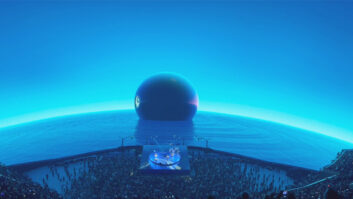
Previously, Ian McMurray looked at demand drivers for 4K. Now he turns his attention to the equipment challenges associated with moving to this format.
Chipset manufacturers will have a significant impact on the uptake of 4K resolution – not least because it is not yet straightforward to deploy in all its glory. In fact, according to Brian Davies, European technology director at AMX, there is, in effect, no such thing as ‘4K’.
“The technical challenges should not be the major concern for the industry, as history proves these will all be overcome in time and the release of the HDMI 2.0 definition is a significant step towards this,” he says. “The true issue today is a lack of understanding with regard to what 4K is on the part of both the industry and the end-users. 4K in itself is not a single defined standard, which means nobody can question the validity of any claims regarding the support of 4K by an individual product, unless you drill down into the technicalities as to the exact flavour of 4K being discussed. 4K is definitely a space where early adopters could be paying a high premium for solutions that will very quickly prove to be outdated and worse still, bring them no real benefits in the short term.”
“AMX has focused on ensuring our underlying product design approach will allow us to quickly and effectively bring ‘true’ 4K support to our ENOVA DGX product line,” he goes on, “with the minimum cost impact to existing installations.”
So what are the challenges to which Davies refers?
“Education is Crestron’s main focus at this stage as there are five key challenges that make 4K a tricky, non-plug-and-play technology,” avers Matthew Buck, commercial account manager at Crestron. “Mixed aspect ratios, new frame rates, signal integrity, cable length restrictions and source/display compatibility are the stumbling blocks that integrators need to be aware of and each one is as important as the next. If there is to be one issue to flag up with 4K, it is that it is markedly different to 720p, 1080p and 3D, which integrated into commercial AV applications with ease. 4K is a much more complex upgrade.”
4K resolution, of course, delivers not twice as much resolution as 2K – but four times as much.
“As a provider of chipsets exclusively used for AV signal distribution, the single biggest challenge presented by 4K is the increase in bandwidth,” says Kamran Ahmed, CEO and co-founder of AptoVision. “While 4K/30Hz requires roughly 10Gbps – a bandwidth level supported by a wide variety of readily available technologies – the full specification of 4K/60Hz requires over 18Gbps. The technology components required to support this bandwidth are beyond cost-prohibitive for mainstream signal distribution platforms. Moreover, this level of bandwidth poses a significant challenge for video transmission over copper cabling (such as CatX), limiting reach to under 50m as compared to about 150m for 2K signals. AptoVision is overcoming this challenge by using an innovative two-cable solution which maintains 2K equivalent reach while still providing real-time, zero-latency transmission and leveraging inexpensive 10Gbps components.”
“4K video requires extremely high bandwidth – at 10.2Gbps it’s perhaps the highest frequency most of us deal with on a routine basis,” echoes Bill Schripsema, commercial product manager at Atlona. “Compared with 1080i, bandwidth changes by a factor of nearly four – which is a very significant consideration for system design. Connectors and cable all need to be of high quality and installed with care and precision for a successful project.”
“Installation techniques and cables that were ‘good enough’ for 1080p aren’t good enough for 4K, adds Schripsema. “For example, the 70m HDBaseT extenders will only work to 40m at 4K resolutions – less if Cat5e/6 are the cables of choice. Many users will need to use the 100m versions of HDBaseT products to reach the full required distance. They will find the cables they pulled and the connectors they installed for 1080p signal distribution won’t work for 4K systems.”
For Jed Deame, VP of marketing at RGB Spectrum – which showcased the 4K-capable Galileo Display Processor at InfoComm – it’s also about bandwidth, and about the plethora of options.
“The increased bandwidth is definitely the most significant factor when you consider the differences in 4K and 2K signal handling,” he claims. “4K data busses, FPGAs, crosspoints and transceivers must run four times faster than 2K ones, which adds complexity and cost to the hardware.”
“Then there’s the challenge of dealing with the myriad of different signal types and interfaces,” he continues. “Choices include dual-link DVI, HDMI 1.4, DisplayPort, and HDMI 2.0 – the implementations of which currently only support 4:2:0 colour space, due to a lack of silicon availability. The best way to overcome this challenge is to have a good collection of 4K signal converters on-hand, as there seems to be no standard interface rising to the top.”
www.amx.com
www.aptovision.com
www.atlona.com
www.crestron.com
www.rgb.com







